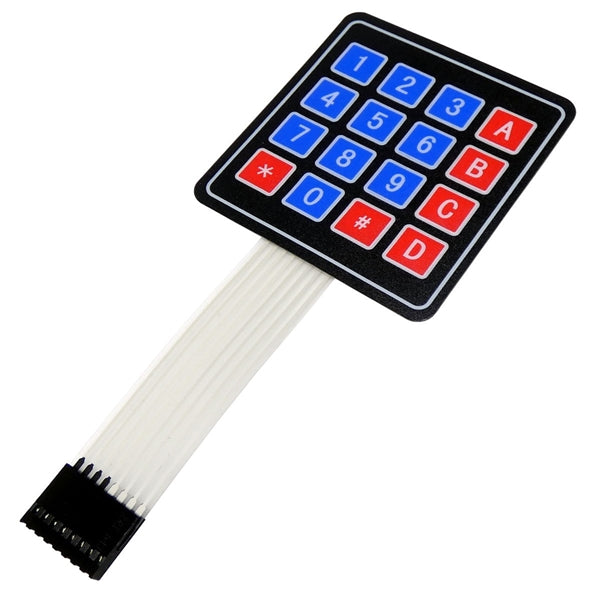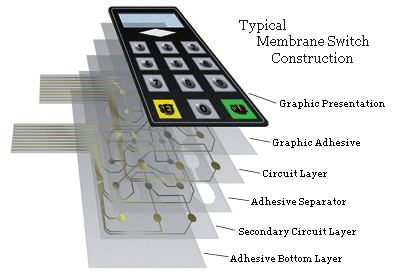All Regarding Membrane Layer Switch Over: Recognizing Its Design and Performance
When you believe concerning the control user interfaces in modern gadgets, membrane layer buttons frequently come to mind. Allow's explore what collections membrane switches apart from other control systems.
What Are Membrane Layer Buttons?

Membrane buttons can likewise be customized regarding shape, dimension, and graphics, enabling manufacturers to develop distinct interfaces tailored to particular items. In general, membrane layer switches play a significant function in enhancing customer experience across a large variety of applications.
Just How Membrane Changes Job
When you press a key on a membrane layer switch, it turns on a simple yet reliable device. The leading layer, frequently made from versatile product, presses down onto a conductive layer below it. This activity bridges the space in between conductive traces, finishing an electric circuit. As quickly as the circuit closes, it sends out a signal to the gadget's controller, which translates your input.
You'll see that the tactile feedback differs based on the switch style, providing either a soft click or a more noticable feedback. As soon as you release the key, the membrane go back to its initial position, resuming the circuit and quiting the signal. This procedure occurs virtually immediately, making sure a responsive customer experience.
Membrane layer switches are prominent because of their durability and resistance to dust and wetness, making them perfect for numerous applications, from house home appliances to clinical gadgets. Recognizing this procedure helps you value their widespread usage.
Key Components of Membrane Layer Buttons
Understanding the vital parts of membrane layer switches is essential for comprehending their performance and layout. At the core, you'll locate the graphic overlay, which offers the visual user interface for customers. Below that, there's a spacer layer that separates the circuit layers, making sure that they do not make contact up until pushed. The circuit layer is where the magic occurs; it includes conductive traces that finish the circuit when you push the switch. One more essential element is the glue backing, enabling the switch to stick to surfaces safely. The safety layer guards against ecological aspects and use, extending the button's life-span. Each component plays a substantial role in ensuring trusted performance and customer interaction. By recognizing these components, you'll obtain understanding into exactly how membrane layer switches run and their relevance in different applications.
Materials Made Use Of in Membrane Change Style
The efficiency and longevity of membrane changes heavily rely on the products used in their design. You normally run into polyester and polycarbonate as main substratums as a result of their excellent toughness and flexibility. These products resist scratches and chemicals, making them excellent for demanding atmospheres.
The conductive layers frequently use silver or carbon, chosen for their integrity and conductivity. membrane switch manufacturer. Silver provides superior efficiency, while carbon is an economical choice. For the overlay, you might take into consideration a matte or shiny finish, relying on your visual needs and individual experience
Adhesives play an important duty as well; they bond layers securely and assure long life. Ensure to select adhesives that stand up to ecological variables like temperature and moisture. Don't neglect the relevance of an excellent printing technique for graphics, as it improves both capability and visual allure. Choosing the appropriate products will assure your membrane button stands the examination of time.
Layout Factors To Consider for Membrane Buttons
While designing membrane layer switches, it's important to take into account numerous elements that influence their performance and individual experience. Begin by focusing on the format and button dimension; make particular they're instinctive and easy to browse.
Validate your style accommodates environmental variables, like moisture or temperature variations, which might influence performance. By meticulously considering these elements, you'll produce a membrane layer switch that enhances usability and complete satisfaction.
Applications of Membrane Switches
Membrane switches are versatile components found in various applications, from industrial equipment to customer electronic devices. You'll see their effect in devices that need long lasting interfaces and in tools that take advantage of sleek designs. Understanding these applications helps you value the capability and usefulness of membrane layer buttons in day-to-day modern technology.
Industrial Devices Use
When you're looking to boost the performance of industrial equipment, membrane buttons offer a dependable service that combines resilience with user-friendly layout. These buttons are best for harsh settings, giving resistance to dirt, moisture, and chemicals. You'll locate them in control panels for manufacturing devices, cooling and heating systems, and clinical gadgets, where precision and responsiveness are crucial. Their low account indicates they fit perfectly into numerous tools, saving beneficial space while keeping convenience of use. With customizable graphics and backlighting options, you can develop an user-friendly interface for drivers, enhancing efficiency and safety and security. And also, their long lifespan lowers upkeep expenses, making them a clever financial investment for your commercial applications. Embrace membrane buttons to enhance your operations and improve total performance.
Consumer Electronic Devices Combination
In the domain name of consumer electronics, membrane buttons play a necessary role in enhancing user communication and tool performance. You'll locate them in tools like microwaves, push-button controls, and pc gaming consoles, supplying a smooth means to communicate with innovation. Their streamlined design permits simple combination into different items, making controls user-friendly and easy to use. With their ability to include graphics and backlighting, you can take pleasure in a contemporary aesthetic that complements the tool's overall appearance. Membrane layer buttons additionally assure toughness and resistance to dust and wetness, extending the lifespan of your electronic devices. By picking membrane switches, see this website you improve not just the performance however additionally the design of your tools, making day-to-day interactions smooth and delightful.
Advantages and Drawbacks of Membrane Layer Switches
While membrane buttons offer a variety of benefits, they also include some downsides that you ought to think about. One substantial benefit is their portable style, making them ideal for space-constrained applications. They're also affordable, giving a durable remedy with a reduced manufacturing expense. Additionally, their seamless surface is very easy to clean, enhancing hygiene in settings like healthcare facilities.

However, there are downsides. Membrane layer switches can have a shorter lifespan contrasted to mechanical switches, particularly under heavy use. They can additionally be much less tactile, which could influence user comments throughout operation. If harmed, fixing them can be great site challenging and typically calls for total replacement. Eventually, their level of sensitivity to severe temperature levels and environmental problems may restrict their performance in certain setups. Balancing these benefits and drawbacks will certainly aid you determine if membrane buttons are the ideal fit for your job.
Regularly Asked Questions
How Much Time Do Membrane Switches Generally Last?
Membrane changes normally last in between 5 to ten years, depending upon usage and ecological problems. You'll intend to assess elements like wear, exposure to moisture, and temperature fluctuations to evaluate their longevity effectively.
Can Membrane Switches Over Be Custom-made for Certain Designs?
Yes, you can tailor membrane layer buttons to fit certain styles (membrane switch manufacturer). You'll have the freedom to select colors, forms, and formats that match your task's needs, guaranteeing they blend flawlessly with your overall aesthetic
What Is the Price Array for Membrane Layer Switch Manufacturing?
The expense Source range for membrane switch manufacturing generally drops between $1 and $10 each, relying on elements like layout intricacy, quantity, and products. You can get quotes from manufacturers to locate the most effective option.

Are Membrane Layer Switches Over Water Resistant or Immune?
Membrane layer buttons can be made to be waterproof or resistant, depending upon products utilized and construction methods. If you require them for damp atmospheres, assure you define those demands during the design process.
How Do Membrane Layer Switches Compare to Typical Buttons?
Membrane layer switches are typically thinner and more versatile than standard buttons, supplying a sleek layout. They're frequently simpler to clean up and integrate, but may not supply the responsive comments you're used to with mechanical choices.
Verdict
